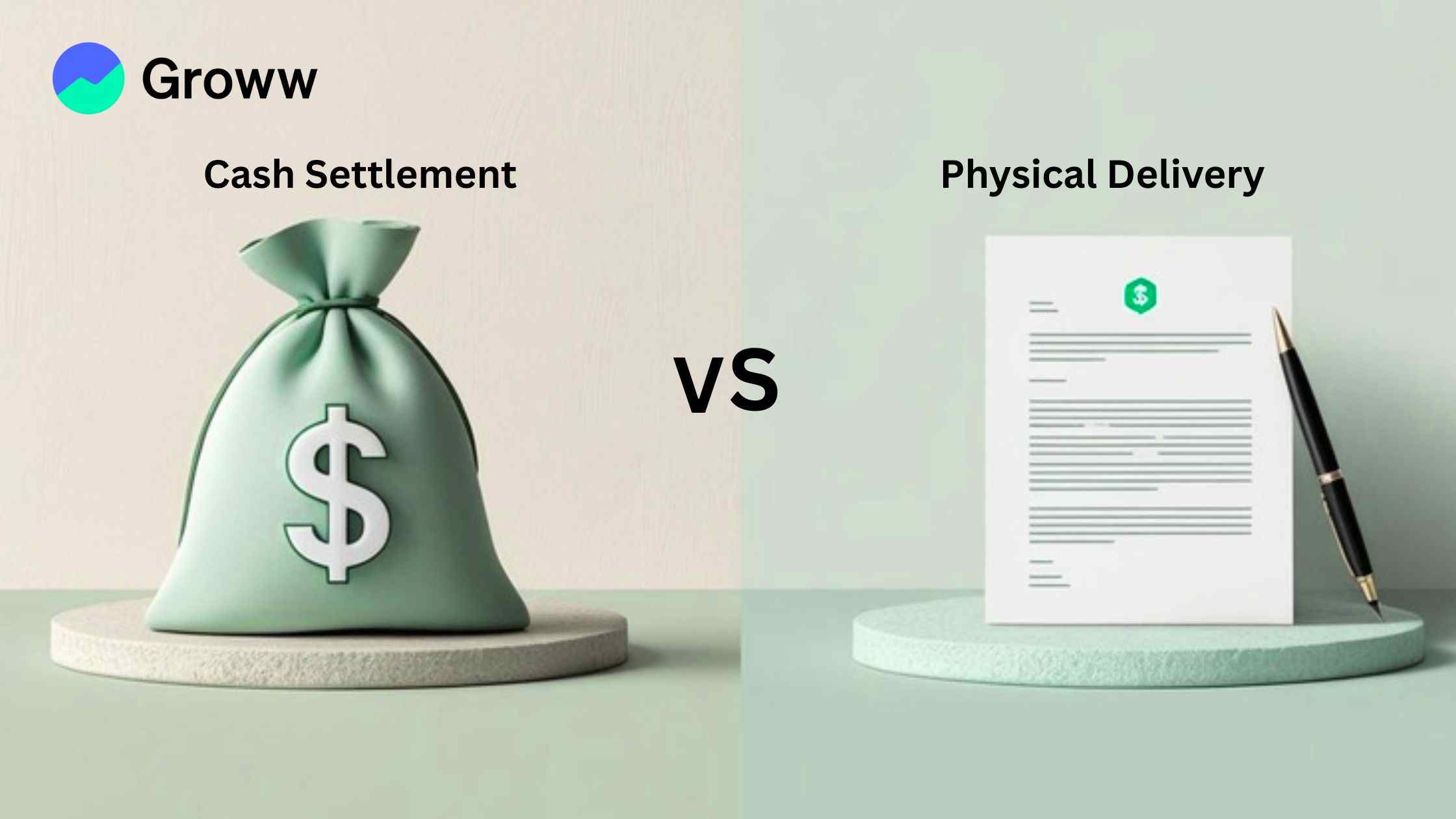Key Differences Between Cash Settlement and Physical Delivery

The cash settlement vs physical delivery debate is a key aspect whenever you’re trading in the commodity market. Cash settlement is when the payment of the difference between the market price and contract price is made in cash. Physical delivery, on the other hand, is when the actual exchange of the underlying asset takes place. Let us look at the differences between the two concepts below.
What is Cash Settlement?
Cash settlement is a key concept in the commodity trading space. Here is what you need to know about it.
- Cash settlement refers to the settling of contracts based on the price difference between the contract price and the market price of the commodity instead of the actual delivery of the commodity.
- The method is a staple for several futures and options contracts upon exercise or expiration, where the seller of the financial instrument transfers the associated cash position.
- It makes the process simpler and enables higher flexibility for settling contracts, particularly for assets which are hard/expensive to deliver physically, making it popular in commodity futures trading. There are also no costs related to logistics, delivery, transportation, and so on.
- For example, if you hold a cash-settled futures contract on gold and the price rises, you will get the cash payment equivalent to the difference between the present market price and the contract price.
- A few examples of cash-settled commodities include crude financial derivatives of commodities, futures contracts based on stock market indices or interest rates, metals like silver and gold, and some agricultural products.
What is Physical Delivery?
Physical delivery is completely different from cash settlement. Here are some of the key aspects regarding the same.
- Physical delivery refers to the physical exchange of the underlying commodity upon the expiry of the contract.
- The underlying commodity is received by the buyer once the seller delivers the same, with the whole process being coordinated by the agent or clearing broker.
- Suppose a futures contract for a commodity such as wheat is bought and physically delivered, then you will get the wheat or equivalent at the agreed-upon quantity or price on the date of delivery.
- There are several logistics and transportation processes involved, including delivery locations, warehouse receipts, storage, etc.
- Some examples of physically-delivered commodities include gold, copper, iron ore, aluminum, and agricultural products like coffee, wheat, soybeans, etc.
Key Differences Between Cash Settlement and Physical Delivery
Here is a round-up of the key differences between cash settlement and physical delivery -
|
Feature |
Cash Settlement |
Physical Delivery |
|---|---|---|
|
Nature |
Financial compensation |
Actual exchange of goods |
|
Purpose |
Speculation and hedging |
Meeting physical demand |
|
Logistics |
No storage or transport |
Requires handling and warehousing |
|
Market Players |
Traders, investors |
Manufacturers, suppliers |
|
Contract Execution |
Settled via price index |
Fulfilled by delivering goods |
Market Applications and Use Cases
Cash settlements are preferred in the following cases:
- Traders and speculators who focus more on price movements in place of underlying asset acquisition prefer cash settlements. At the same time, those looking for quicker and simpler settlements usually prefer this method.
- Cash settlement enables traders to profit from volatility in prices minus any physical delivery complexities, making it a better option for speculation.
- Cash settlement is also preferred by investors and hedge funds who want deals to be swiftly completed.
- Cash-settled options are commonly seen for equity index options (the market index is the underlying asset) and also in futures and options (F&O) contracts for agricultural commodities.
- Also, cash settlement may boost market liquidity by simplifying transactions and combating logistical hurdles.
Physical delivery may be more preferable in these scenarios:
- Producers of commodities and manufacturers/refiners may require taking or making physical delivery of commodities. This works for hedgers and consumers who prefer bypassing cash settlement-related complexities.
- If a company manufactures/produces any commodity and wants to lock-in the price for the same or if it consumes any such commodity looking to secure the input price.
- Large institutional buyers, manufacturers and buys may also prefer physical delivery to cater to their operational needs.
Conclusion
Cash settlement vs physical delivery, which one should you choose and when? Cash settlement works when you expect to do quick transactions without complex physical delivery logistics and other hurdles. This works when in the case of assets that are hard to transport or store. It is quicker and lowers transportation, storage, and the insurance costs of underlying assets, while leading to higher market liquidity as it is easier to exit or enter positions.
Physical delivery, on the other hand, is the better option if you desire the actual ownership of the underlying commodity. However, please note that it could lead to additional costs such as storage, transportation, and logistics. So, now that you have a better idea of physical delivery and cash settlement, it is time to start your commodity trading journey today with expert guidance and insights.